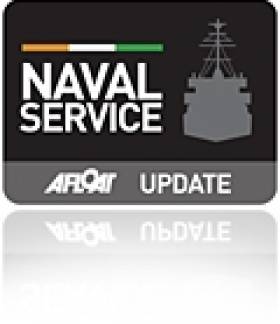Displaying items by tag: Eithne Enters Med
#EithneEntersMed - Naval Service flagship LÉ Eithne (P31) this evening entered the Strait of Gibraltar on her way to assist in the Mediterranean's migrant crisis, writes Jehan Ashmore.
The deployment of the 1,800 tonnes HPV is to enable in the search and rescue (SAR) of refugee migrants from mostly small craft that face the danger of sinking and loss of life.
She had departed her Naval Base homeport of Haulbowline, Cork Harbour on Saturday. Since her departure three days ago at the naval base is where Minister of Defence Simon Coveney was joined by An Taoiseach Enda Kenny T.D. to meet the crew of 70 in total. Two crew members are from the Army Medical Corps to assist refugees in an ever worsening migrant crisis.
The Cork built flagship dating from 1984 was commissioned originally as a Helicpoter Patrol Vessel (HPV) hence the extensive aft-deck space and adjoining hanger which will be used by boarding migrants.
It is also understood that the three RIBs will provide rapid reaction launch missions to assist in SAR operations. The need for such RIB craft will step up efforts as the growing numbers of refugees flee north Africa having fled war-torn regions of the Middle East and swathes of northern Africa.
The RIBS will be launched to aid sinking craft laden with refugees. Many of these unseaworthy craft used by people-traffickers are then abandoned except for the 'human-cargo' left to drift.
LÉ Eithne is expected to reach Italy this weekend (if not before) and to where the countries authorities will preside in the overall running of humanitarian operations.
This is the first time that an Irish Naval Service vessel has been involved in a humanitarian role overseas.
The base port to where LÉ Eithne is assigned has not been disclosed by the Department of Defence for operational security reasons. It is reported that the deployment duration in the Mediterranean is for two months and then the 80m flagship will be relieved by another Irish patrol vessel.




























































